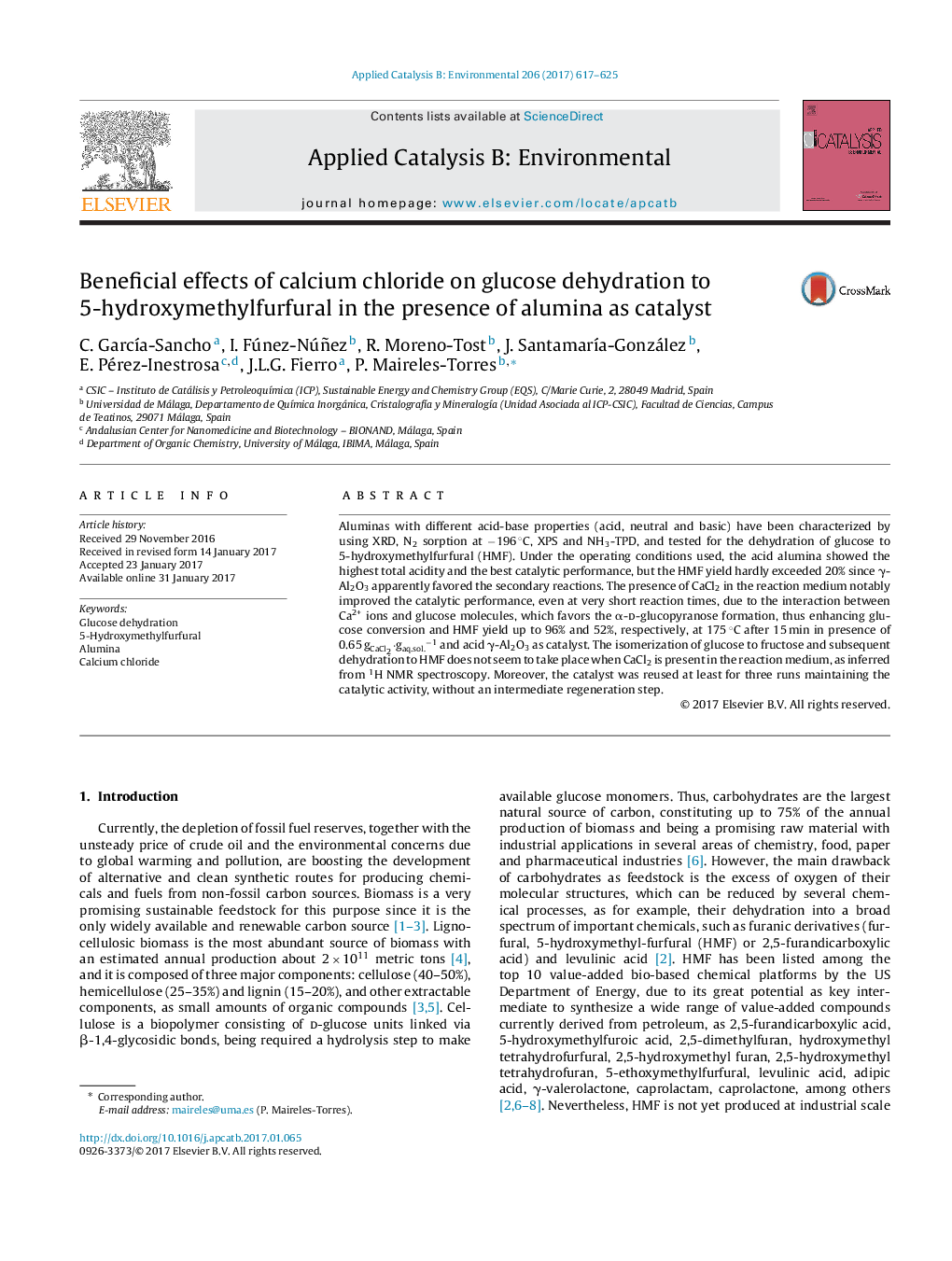| Article ID | Journal | Published Year | Pages | File Type |
|---|---|---|---|---|
| 6454764 | Applied Catalysis B: Environmental | 2017 | 9 Pages |
â¢Î³-Al2O3 with different acid-base properties is very active in glucose dehydration.â¢CaCl2 shifts the equilibrium toward α-glucopyranose, favoring the HMF formation.â¢The glucose isomerization to fructose is not predominant in presence of CaCl2.â¢Synergistic effect between CaCl2 and γ-Al2O3 provides HMF yield of 52% in 15 min.â¢Alumina can be reused at least during three runs without regeneration.
Aluminas with different acid-base properties (acid, neutral and basic) have been characterized by using XRD, N2 sorption at â196 °C, XPS and NH3-TPD, and tested for the dehydration of glucose to 5-hydroxymethylfurfural (HMF). Under the operating conditions used, the acid alumina showed the highest total acidity and the best catalytic performance, but the HMF yield hardly exceeded 20% since γ-Al2O3 apparently favored the secondary reactions. The presence of CaCl2 in the reaction medium notably improved the catalytic performance, even at very short reaction times, due to the interaction between Ca2+ ions and glucose molecules, which favors the α-d-glucopyranose formation, thus enhancing glucose conversion and HMF yield up to 96% and 52%, respectively, at 175 °C after 15 min in presence of 0.65âgCaCl2·gaq.sol.â1 and acid γ-Al2O3 as catalyst. The isomerization of glucose to fructose and subsequent dehydration to HMF does not seem to take place when CaCl2 is present in the reaction medium, as inferred from 1H NMR spectroscopy. Moreover, the catalyst was reused at least for three runs maintaining the catalytic activity, without an intermediate regeneration step.
Graphical abstractDownload high-res image (96KB)Download full-size image
